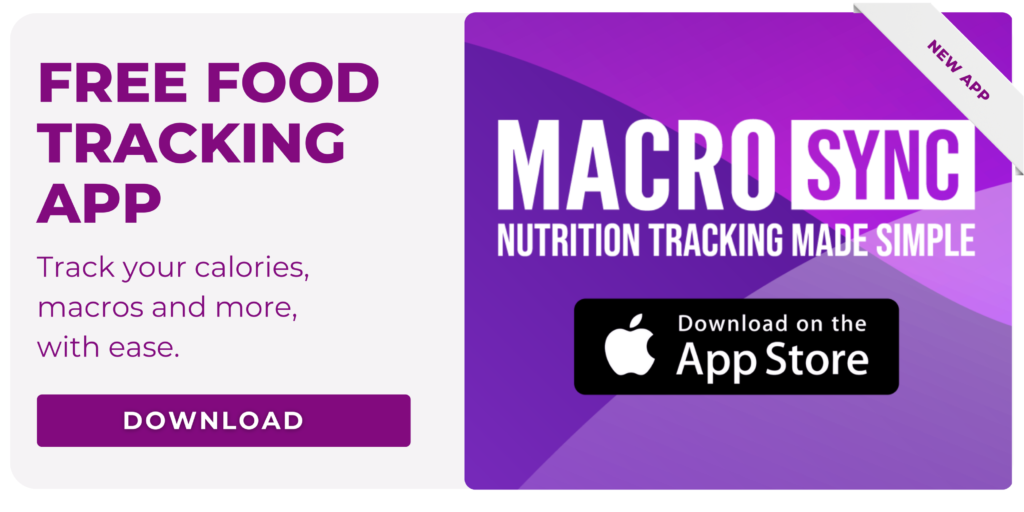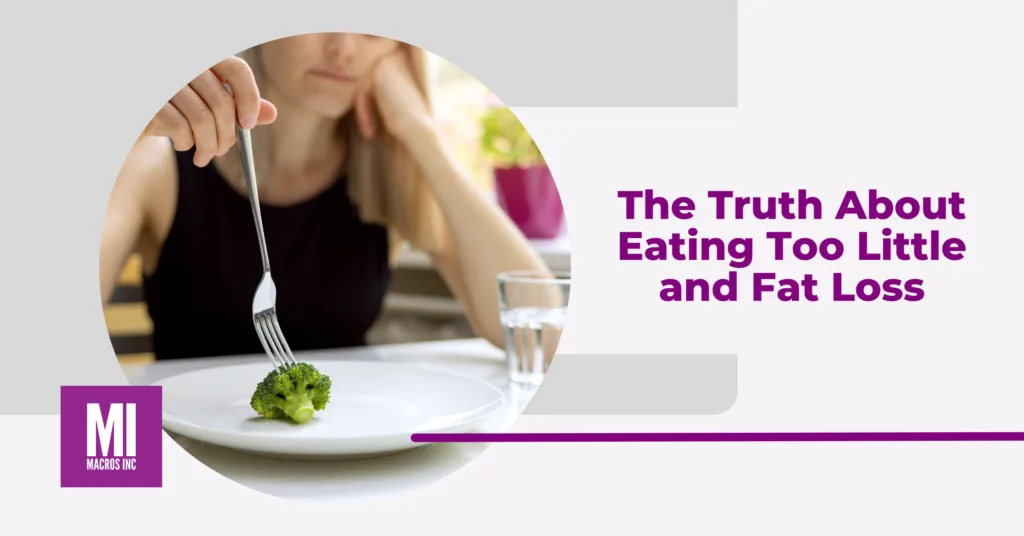Before tracking apps. Before TikTok. Even before Facebook, I started my fat loss journey in the wild west of the internet—where advice was conflicting, and myths ran rampant. One of the biggest? “Eat too little and you’ll stop losing fat.” Closely followed by: “Eat more, and the scale will drop.”
I heard it, I believed it, and I even experienced it. But now, after years as a professional in nutrition coaching, I know better. And I want to break it all down for you.
Let’s talk about what really happens when you eat “too little” for fat loss.
Jump to a Topic
The Truth About Eating Too Little and Fat Loss
My Experiment with Eating Too Little
I was told I should diet on 1800 calories. So I did. I lost some weight. But I wanted more fat loss, so I dropped to 1200 calories. And then—tire screech—the scale stopped moving. For a long time. I got tired, I moved less, and I felt awful. And many of you know how this part of the story goes. I got frustrated, convinced myself the calorie model was broken, and wanted to give up.
So, I ate more. And guess what happened? The scale moved. A big drop. I was back on my way to Shredsville. Suddenly, it seemed like eating more meant losing more fat. That must be the answer, right?
What Really Happened
Let’s explore the real reasons your fat loss might feel like it stalls.
The Role and Stress of Cortisol
Dieting is stressful on the body. It raises cortisol. A little bit of cortisol? No big deal. The body can handle it. Super low calories? Now it is a major stressor. Cortisol levels spike, leading to water retention. And just like that, the scale stops moving. Not because fat loss stopped—because you are holding onto water.
Then the frustration kicks in. The exhaustion takes over. The “eat more food” phase follows, and suddenly, overnight, the scale drops big time. It feels like magic.
Nope. Just science.
The Cortisol Reversal
Adding food back into your diet reduces stress. Lower stress means lower cortisol. That means the body flushes out excess water, and—boom—the scale drops. But here is the catch. A big chunk of that was never fat to begin with. It was just water weight shifting around. Fat loss never actually stalled—it was just hidden by fluid retention.
The Myth of ‘Eating More to Lose More’
Now that I have told you the story, let me back it up with what actually happens in practice.
When I diet, I do what I tell everyone not to do. I go on really low calories because:
- I have a broken hunger response.
- I understand exactly what happens and can handle it.
Here is what happens every single time:
- I eat well below 1800 calories.
- The scale stalls for a bit. I ignore it.
- I keep eating low and walking 15,000 steps daily.
- The scale moves in chunks instead of daily drops.
- I get fatigued.
- I eat a higher calorie day.
- The scale drops big the next day.
- I laugh at the idea of “eating more to lose more.”
- Over time, I lose weight exactly as expected.
This is how fat loss really works—it’s not about daily or even weekly check-ins. It’s about long-term trends, consistent habits, and meaningful adjustments over time. The day-to-day scale fluctuations? Just noise.

The Hard Truth
Under-eating doesn’t stall fat loss, and eating more doesn’t promote fat loss—these are common myths. In reality, the process is influenced by factors like water retention, stress responses, and fluid shifts.
If I could control every variable in a lab setting (or, let’s say, hypothetically lock someone in my basement), I could prove this outcome every time. The calorie equation is a proven science, and the human body doesn’t break the laws of physics.
The key is understanding that fat loss happens over time, not overnight. Stick to the plan, assess your progress over months, and stop believing in smoke and mirrors.
Try our nutrition coaching, for free!
Be the next success story. Over 30,000 have trusted Macros Inc to transform their health.
Simply fill out the form below to start your 14-day risk-free journey. Let's achieve your goals together!

